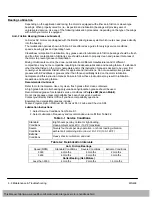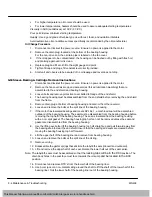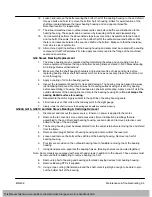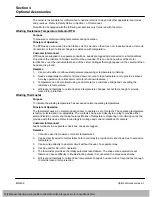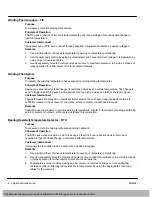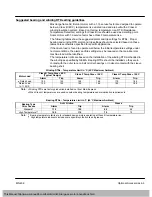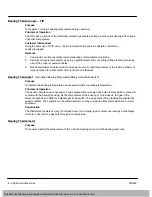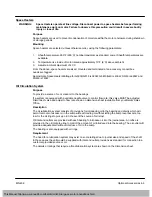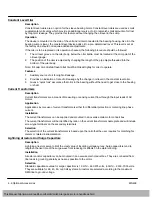
Section 3
Maintenance & Troubleshooting
Maintenance & Troubleshooting 3-1
MN409
G
−
Series AC motors when properly applied, require minimal routine maintenance. Since clearances and
fits are precisely machine, no periodic mechanical adjustments are required. Like any precision machine,
periodic inspection and simple routine maintenance will prolong your motor’s life and help spot potentially
damaging conditions. The minimal time spent performing the simple procedures below cannot begin to
compare with the cost of lost productivity and time consuming major repairs incurred through neglect or
routine inspection and maintenance.
In addition, the following should always be observed.
S
Provide adequate ventilation.
S
Keep air and exhaust openings clean and free of obstructions.
S
Avoid sharp blows and excessive axial thrust loads on the output shaft.
S
Maintain proper lubricant level (check weekly on oil lubricated units).
Caution:
Do not use solvents containing trichloroethane to clean interior or exterior of motor. Damage
may occur to paint and insulation systems.
Periodic Inspection
Inspections are important to the proper operation and maintenance of a motor, should occur
every 3 months (or 500 operating hours whichever comes first).
1.
Listen for any abnormal noises and check cause immediately.
2.
Check voltage and frequency variations. Unbalanced voltage or single phase operation of poly
phase motors will cause excessive heating and ultimately failure. Only a slight unbalance of
voltage applied to a poly phase motor will cause large unbalance currents and result in
overheating.
3.
Check power supply total harmonic distortion to avoid overheating.
4.
Periodic checks of phase, voltage, frequency, and power consumption of an operating motor
are recommended.
5.
Check for excessive vibration.
6.
Check all air passages and ensure that they are not blocked or clogged.
7.
Check to see that all covers are in place and secure.
8.
Disconnect and lockout the power source. Ensure no power is applied to the motor.
9.
Provide adequate ventilation. If the motor is not properly ventilated, overheating can occur and
cause early motor failure.
10. Keep air and exhaust openings clean and free of obstructions.
11. Avoid sharp blows and excessive axial thrust loads on the output shaft.
12. Maintain proper lubricant level (check weekly on oil lubricated units).
13. Check all electrical connectors to be sure that they are tight.
14. Check for proper lubrication. For sleeve bearing motors check oil level. The oil level must be at
the midpoint of sight gauge when the motor is at rest and in operation.
15. Check bearing temperature rise.
16. When provided, check that constant level oilers have oil in them.
Check that cap on oiler is screwed on tightly. Make sure the oil is clean.
These checks can also provide an excellent indication of the load from the driven equipment.
Comparisons of this data with previous no load and full load power demands will give an indication of the
performance of the driven machine.
This Manual:http://www.manuallib.com/baldor/mn409-large-ac-motors-handbook.html
















